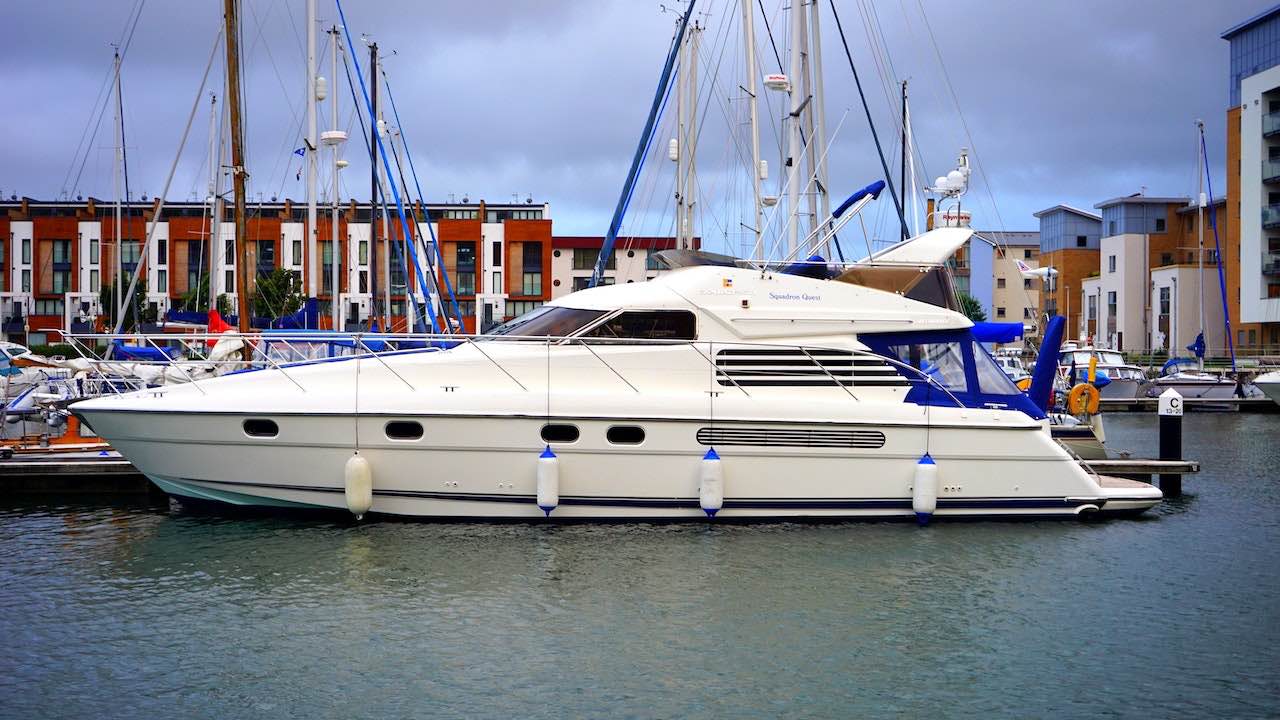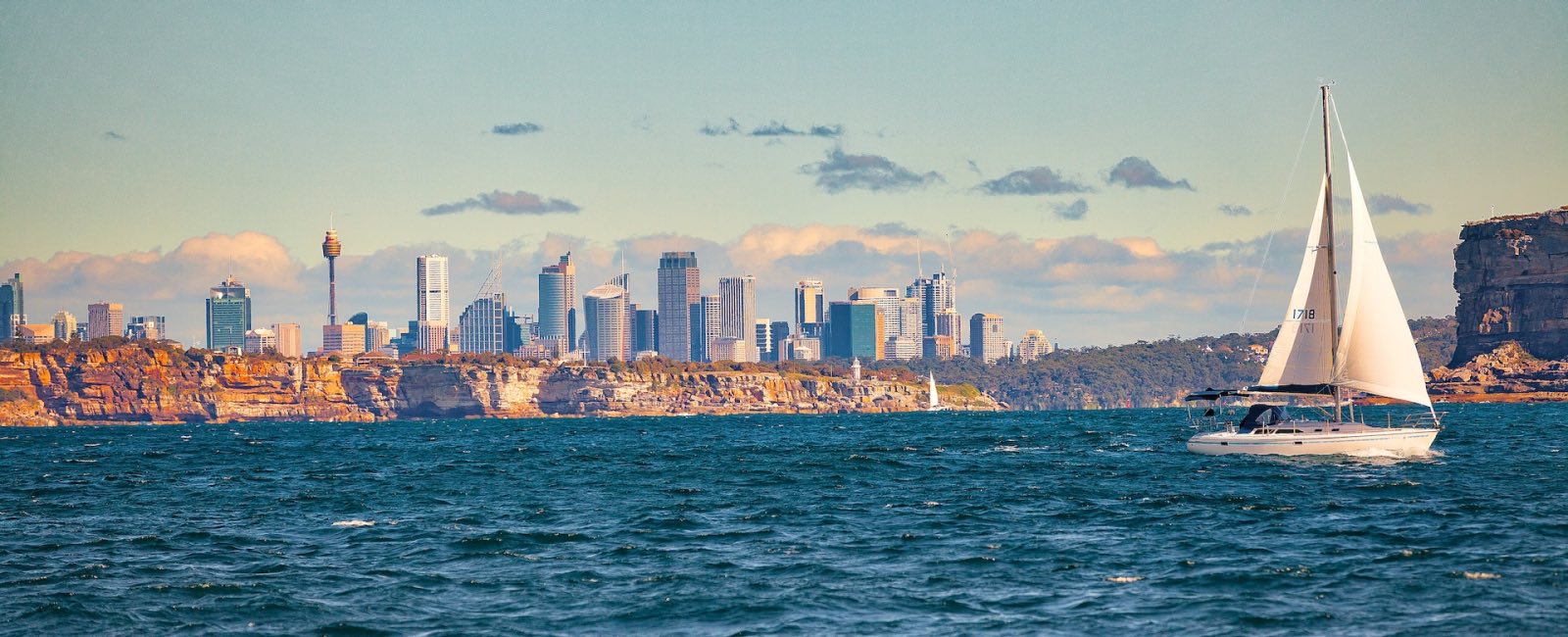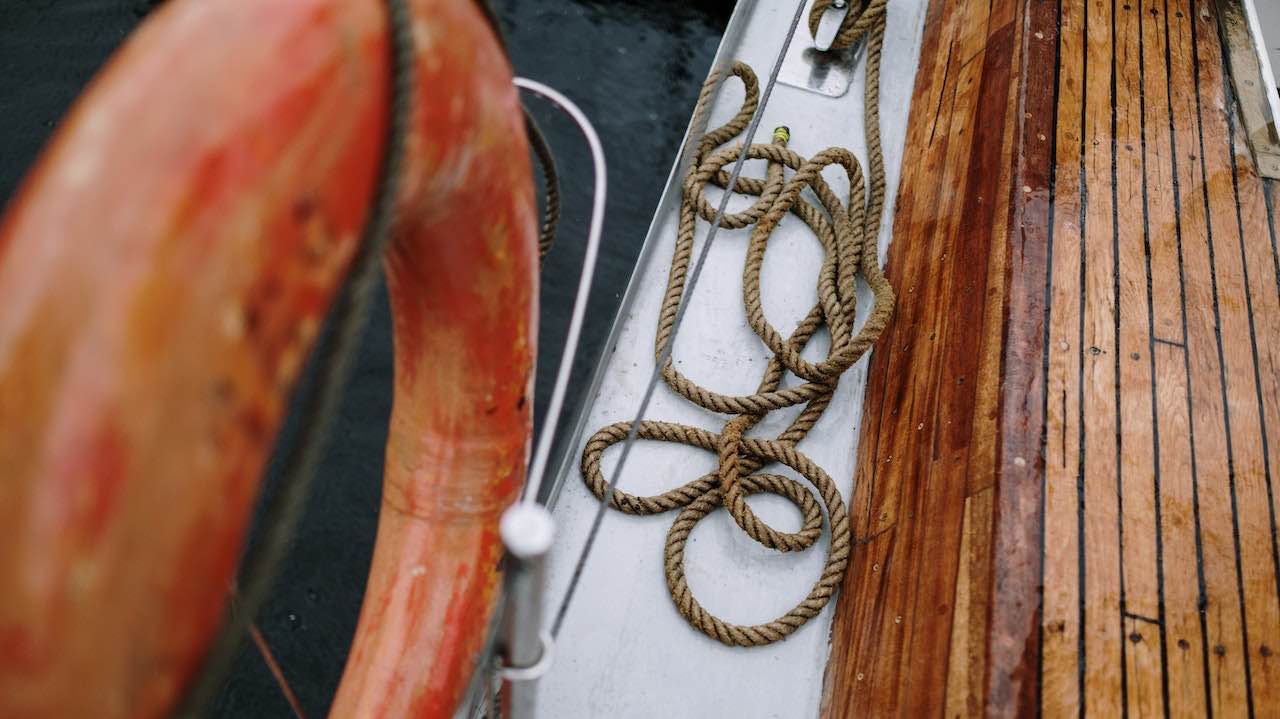1. Your Household: Who’s Living on the Boat?
Living on a boat full-time is a unique and adventurous lifestyle choice that can be incredibly rewarding. Whether you are a digital nomad or thinking of living, considering living on a boat. It’s crucial to carefully consider who will be sharing this maritime adventure with you. The dynamics of your household play a significant role in sailing lifestyle.
Singles: Solo Adventurers of the Sea
For singles, living on a boat full-time can offer unparalleled freedom and self-discovery. You have the entire boat to yourself, and decisions are yours alone to make. It’s an opportunity to embrace solitude, self-sufficiency, and the thrill of self-reliance.
Couples: Navigating Together
Couples embarking on the boat living journey must consider the challenges and joys of sharing a confined space. While romantic sunsets and cozy evenings afloat can be truly magical, there will also be moments when you’re in each other’s personal space 24/7.
Families: Raising Sailors
For families with children, boat living offers a unique opportunity for bonding and education. Kids growing up on a boat learn valuable life skills early, from navigating to problem-solving. The rewards of watching your children grow up with an appreciation for nature and self-reliance can be immeasurable.
Pets: Companions Afloat
Don’t forget about your furry or feathered friends. Many boat owners bring pets aboard. While pets can be excellent companions, it’s essential to consider their safety and comfort on the boat.
Multi-Generational Crews: The Extended Boat Family
Some adventurous souls choose to share their boat with extended family members or friends. This can be a delightful way to create lasting memories and strengthen relationships.
Tailoring Your Boat for Your Household
Each household dynamic requires different boat layouts, amenities, and storage solutions. When selecting a boat, consider the number of cabins, sleeping arrangements, and common areas. For example, families might prioritize spacious living areas, while solo adventurers may focus on compact and efficient layouts.
Regardless of your household composition, communication, adaptability, and a shared love for the water will be your greatest assets in making boat living a harmonious and fulfilling experience.
2. Necessary Space for Full-Time Boat Living
When you decide to embrace the full-time boat living lifestyle, you’re not just choosing a unique way to live; you’re also embracing a more minimalist and compact way of life. On a boat, space is at a premium, and every inch must be carefully considered and utilized to ensure comfort and functionality.

The Significance of Space Management
Effective space management is key to enjoy sailing and making boat living enjoyable and sustainable. Unlike traditional homes, where you can spread out and accumulate possessions, sailing around demands that you prioritize the essentials and make the most of your limited square footage.
Here are some important considerations for living aboard a sailboat:
- Multifunctional Furniture: Invest in furniture pieces that serve multiple purposes. For example, a dining table that can be converted into a bed or storage ottomans that double as seating. These space-saving solutions help maximize the utility of each item.
- Vertical Storage: Make use of vertical space by installing shelves, hooks, and storage compartments on walls and bulkheads. This allows you to store items like dishes, clothing, and personal belongings without cluttering valuable floor space.
- Declutter Regularly: Minimalism is a cornerstone of boat living. Regularly evaluate your possessions and remove items you no longer need or use. A clutter-free boat not only feels more spacious but also reduces the risk of accidents.
- Compact Appliances: Opt for compact, energy-efficient appliances and fixtures. Choose a smaller refrigerator, a stovetop with multiple burners, and space-saving bathroom fixtures to make the most of confined spaces.
- Outdoor Living: Boats offer the unique advantage of outdoor living spaces. Use the cockpit or deck for dining, lounging, and socializing to expand your living area without adding interior clutter.
- Stowage Solutions: Explore creative stowage solutions, such as under-bed storage, hidden compartments, and ceiling hammocks for storing items like clothing, food, and gear.
- Mindful Decorating: Choose light colors and minimalist decor to create a sense of openness and brightness. Mirrors can also give the illusion of more space.
- Reduce Redundancy: Prioritize multipurpose items and avoid redundancy. For instance, one pot that can be used for various cooking tasks is more practical than a collection of specialized cookware.
- Organizational Systems: Implement efficient organizational systems for cabinets and drawers. Use bins, dividers, and labels to keep items easily accessible and orderly.
- Personal Space: Ensure that each member of your household has a designated personal space or storage area. This helps maintain boundaries and reduce clutter.
By embracing these space management principles and adopting a minimalist mindset, you can create a comfortable and efficient living environment on your boat.
3. Other Basic Necessities for Full-Time Boat Living
Living on a boat full-time is an adventure that requires a unique approach to life’s basics. From cooking meals to maintaining hygiene, here’s a closer look at some essential aspects of daily life when your home is a floating oasis.
Cooking Aboard: Galley Essentials
The galley, or kitchen, on a boat may be smaller and less equipped compared to a conventional kitchen, but it’s where culinary creativity thrives. To make the most of your boat’s galley:
- Compact Appliances: Invest in marine-grade, compact appliances like a two-burner stove, oven, and a small refrigerator. These appliances are designed to withstand the rigors of marine life.
- Provisioning: Plan your meals carefully and stock up on non-perishable and canned goods. Limited storage space means fewer trips to the grocery store, so efficient provisioning is key.
- Seasickness-Friendly Recipes: Opt for easy-to-make meals that won’t cause seasickness, as boat movement can affect cooking. Simple recipes with minimal prep work are ideal.
- Outdoor Cooking: Utilize the grill or cook meals on the deck when weather permits. Grilling seafood you’ve caught yourself is a delightful part of boat living.
Hygiene and Sanitation: Compact Bathrooms
Boat bathrooms, known as heads, are typically smaller and require thoughtful usage:
- Marine Toilets: Marine heads are different from household toilets, so familiarize yourself with their operation and maintenance.
- Water Conservation: Freshwater is a precious resource on a boat. Be mindful of water usage, especially when showering. Many boaters opt for quick, efficient navy showers.
- Waste Management: Learn how to properly handle waste, including blackwater and greywater. Compliance with marine sanitation laws is essential.
- Laundry: Access to laundry facilities may be limited. Consider compact, portable washing machines, and get familiar with laundromats at marinas.
Adapting to Compact Living: Mindset Matters
Living on a boat full-time requires an adaptable mindset:
- Downsizing: Embrace minimalism and pare down your belongings to the essentials. Simplifying your life is liberating and makes boat living more comfortable.
- Routine Maintenance: Regularly maintain your boat to ensure it stays in good condition. Learn basic boat maintenance skills or hire a qualified marine technician. You should be equipped with lots of tools which would come in handy if you choose to move on sailboat
- Weather Awareness: Be weather-savvy. Weather conditions can impact your plans and safety. Stay informed and be prepared for changing conditions. Life at sea can be a bit of a challenge specially in long-term sailing means being aware of wind and waves at all times.
- Community and Support: Connect with other liveaboard boaters and join boating associations. Saying goodbye to friends is tough, the boating community is often welcoming and provides valuable support and advice.
- Adaptability: Flexibility is key in boat living. Living in a very small space, one has to be prepared to adjust plans and adapt to unforeseen circumstances.
3. Your Budget: Navigating the Financial Waters of Boat sailing
Embarking on a full-time boat living adventure is not just a lifestyle change; it’s a financial commitment that requires careful planning and consideration. Here, we’ll dive into the financial aspects of boat living, helping you chart a course for a budget that keeps your dreams afloat.

Understanding the Costs of Boat Living
Before setting sail, it’s essential to have a clear understanding of the costs associated with living on a boat full-time. These costs can be broken down into several categories:
- Boat Purchase: The initial cost of acquiring a boat can vary greatly depending on the type, size, age, and condition of the vessel. Whether you buy new or used, this is often the most significant upfront expense. You should buy a boat which is capable of long-term sailing and matches your cruising lifestyle.
- Maintenance and Repairs: Boats require ongoing maintenance and occasional repairs. Budget for routine maintenance, haul-outs, engine servicing, and unexpected repairs.
- Marina Fees: If you plan to dock your boat in a marina, you’ll need to budget for slip fees. Marina fees vary widely depending on location, amenities, and boat size.
- Insurance: Boat insurance is essential to protect your investment. Factors like the type of boat, coverage, and your boating experience can influence insurance costs.
- Fuel and Utilities: Factor in the cost of fuel for propulsion and onboard generators. You’ll also have utility costs, including electricity, water, and sewage pump-out fees.
- Provisions: Budget for groceries, cleaning supplies, and other essentials. Living on a boat often means less storage space, so provisioning efficiently is crucial.
- Safety Equipment: Invest in safety gear like life jackets, fire extinguishers, and emergency signaling devices. These are non-negotiable expenses for responsible boat owners.
- Personal Expenses: Don’t forget about personal expenses like health insurance, entertainment, and leisure activities. Boat living should be enjoyable, so allocate funds for fun too.
Budgeting Strategies for Boat Living
Creating a budget for full-time boat living requires a different approach than budgeting for a land-based lifestyle. Here are some strategies to help you navigate your financial waters and keep the boat in good condition.
- Detailed Expense Tracking: Keep a detailed record of all your expenses for the first few months to understand your spending patterns and identify areas where you can save.
- Emergency Fund: Build an emergency fund for unexpected boat repairs or other unforeseen expenses. Having a financial safety net is crucial.
- Frugal Living: Embrace frugality and minimalism. Reduce unnecessary expenses and focus on what truly matters to you.
- Maintenance Fund: Set aside a portion of your budget for routine boat maintenance. Regular upkeep can prevent costly repairs in the long run.
- Alternative Docking Options: Explore cost-effective docking options, such as mooring balls or anchorages, which may be more affordable than marina slips.
- Liveaboards’ Communities: Join liveaboard communities and forums to gain insights from experienced boat dwellers. They can provide tips on budgeting and cost-saving strategies.
- Periodic Assessments: Review and adjust your budget regularly as your circumstances change or as you gain more experience with boat living.
4. Do You Need Permission? Navigating Legal and Regulatory Aspects of start living sailboat life
As you prepare to embark on the full-time boat living journey, it’s vital to understand that living on the water comes with a set of legal and regulatory considerations that can vary by location. Navigating these waters is essential to ensure a smooth and lawful experience.

Understanding Marine Regulations
Marine regulations are in place to promote safety, protect the environment, and maintain order on the waterways. Here are some key aspects to consider:
- Boating Licenses: In many regions, you may need a boating license or certificate of competency to operate a vessel. These requirements can depend on the type and size of the boat.
- Navigation Rules: Familiarize yourself with the International Rules of the Road and any local navigation rules specific to your area. These rules govern the safe operation of vessels and prevent collisions.
- Environmental Regulations: Proper disposal of waste, sewage, and graywater is essential to protect the environment. Comply with local regulations for sewage pump-out and waste management.
- Anchoring Regulations: Some areas have restrictions on anchoring, including designated anchorages, time limits, and distances from shore. Be aware of these regulations when selecting anchorages.
- Permits and Licenses: Depending on your location, you may need permits or licenses for various activities, such as fishing or collecting seafood.
- Boat Safety Equipment: Ensure your boat is equipped with the necessary safety equipment, including life jackets, fire extinguishers, and emergency signaling devices, to comply with safety regulations.
Permissions for Living Aboard
Living aboard a boat full-time may require additional permissions, which can vary by location and type of waterway. Here are some considerations:
- Marina Rules: If you plan to dock in a marina, understand the marina’s rules and regulations for liveaboards. They may have specific requirements and fees.
- Anchoring Permits: In some areas, you may need anchoring permits to stay in anchorages or mooring fields. Research local anchoring regulations and obtain the necessary permits.
- Zoning and Liveaboard Regulations: Investigate whether there are zoning laws or liveaboard regulations in your chosen area. Some jurisdictions have restrictions on full-time boat living.
- Mooring Fields: If you’re considering a mooring field, find out if there are waiting lists, fees, or specific regulations governing mooring usage.
Research and Compliance
Before casting off, take the time to research the specific regulations and requirements in your intended cruising area. Here’s how to navigate these waters effectively:
- Local Authorities: Contact local maritime authorities or harbormasters to obtain information on local regulations and permits.
- Online Resources: Use online resources and boating forums to gather information from other boaters who have experience in your chosen area.
- Boating Associations: Join boating associations or clubs, as they often provide guidance and resources on compliance with regulations.
- Stay Informed: Regulations can change, so stay informed and be prepared to adjust your plans accordingly.
Remember that compliance with regulations not only ensures your legal standing but also contributes to the safety and sustainability of the marine environment. It’s an essential part of responsible boat living that allows you to enjoy the journey while respecting the waters you call home.
5. Best Boats to Live on a sailboat: Finding Your Cozy Floating Home
Choosing the right boat for full-time living is a pivotal decision on your journey to becoming a liveaboard. The type of boat you select can significantly impact your comfort, lifestyle, and overall experience. Here, we explore various boat options that make excellent floating homes for full-time living.

Tugboats and Trawlers: The Comfortable Cruisers
Tugboats and trawlers are well-known for their stability, spacious interiors, and long-range capabilities. These boats are often favored by liveaboards for several reasons:
- Ample Space: Tugboats and trawlers have generous living areas, making them comfortable for couples or families.
- Efficiency: They are known for fuel efficiency, which can be a major cost-saving advantage.
- Stability: Their full displacement hulls provide a smooth and stable ride, even in rough seas.
- Storage: Tugboats and trawlers often come with substantial storage space for provisions and personal belongings.
- Comfort: Many feature all the amenities of a home, including a fully-equipped galley, spacious cabins, and even a washer and dryer.
Houseboats: The Waterfront Homes
Houseboats offer a unique blend of a floating home and a cruising vessel. They’re essentially floating houses, with the following advantages:
- Spacious Living: Houseboats are known for their generous living spaces, making them ideal for families or those who crave room to spread out.
- Stability: When properly moored, houseboats provide a stable, house-like environment.
- Scenic Views: Wake up to stunning waterfront views right outside your window.
- Customization: Many houseboats can be customized to fit your preferences and needs.
- Community: Houseboat communities often have a strong sense of camaraderie, providing a unique social aspect to boat living.
Yachts: Luxury Afloat
For those seeking the utmost in luxury and comfort, yachts offer a premium full-time living experience:
- Elegance: Yachts come in various sizes, but even smaller ones often feature high-end finishes and amenities.
- State-of-the-Art Technology: Modern yachts often include advanced navigation systems, entertainment centers, and climate control.
- Crew Options: Larger yachts may have space for a crew, offering a luxurious, worry-free lifestyle.
- Sailboats: Embracing the Wind: Sailboats are a favorite among adventurers who appreciate the romanticism of wind-powered travel
- Environmental Friendliness: Sailing is an eco-friendly option, as it relies on wind rather than fuel.
- Simplicity: Sailing encourages a simpler, more mindful lifestyle, with fewer mechanical systems to maintain.
- Affordability: Smaller sailboats can be more affordable both in terms of purchase and maintenance costs.
- Connection to Nature: Living on a sailboat provides an unparalleled connection to nature, as you harness the wind’s power to move.
Floating Homes: The Unique Abodes
Floating homes are fixed, house-like structures located in marinas or on the water’s edge. They offer a unique blend of land-based living with a waterfront lifestyle:
- Stability: Floating homes are permanently moored, providing a stable living environment.
- Land-Like Amenities: They often come with all the amenities of a traditional home, including utilities and sewage connections.
- Community: Floating home communities can be tight-knit and social, akin to neighborhood living.
Choosing Your Cozy Floating Home
Ultimately, the best boat for full-time living depends on your personal preferences, budget, and lifestyle. Consider factors like size, layout, maintenance requirements, and whether you want to cruise or stay put in one location. Take your time to research, visit boat shows, and consult with experienced liveaboards to find the perfect vessel that will make your boat living dream a reality.
6. Living Aboard: Safety Considerations for liveaboard sailor
Living on a boat full-time offers a unique and adventurous lifestyle, but it also comes with specific safety considerations that are essential to ensuring a secure and enjoyable experience on the sailing boat. Here, we explore key safety aspects that every liveaboard should prioritize.

Life Jackets and Personal Flotation Devices (PFDs): Life jackets are your first line of defense in case of an emergency. Ensure that you have enough PFDs on board for every member of your household and that they are easily accessible.
Fire Safety: Fires on boats can be catastrophic due to the limited space and the proximity of flammable materials. Install smoke detectors and fire extinguishers in critical areas of your boat. Conduct regular fire drills to ensure everyone knows what to do in case of a fire.
Emergency Signaling Devices: Have emergency signaling devices such as flares, a whistle, and a VHF marine radio on hand. These tools can be crucial for summoning help in emergencies.
First Aid Kit: A well-stocked first aid kit is essential. Ensure it includes supplies for treating common injuries and ailments that can occur on a boat.
Man Overboard (MOB) Procedures: Develop and practice MOB procedures regularly. Invest in MOB recovery devices like life rings with lights and throwable flotation devices.
Weather Awareness: Stay informed about bad weather conditions in your area. Sudden storms and changing weather patterns can be challenging for boat dwellers. Access weather reports and carry a weather radio or app to receive updates while on the water.
Safe Navigation: Navigation is a critical aspect of safety. Understand the rules of navigation, maintain accurate charts, and know how to use navigation equipment like GPS, depth sounders, and radar.
Anchoring Safety: Proper anchoring is crucial for a secure night’s rest. Ensure your anchor is appropriate for your boat’s size, and regularly inspect the anchor and rode for wear.
Dinghy Safety: If you use a dinghy for transportation to and from shore, make sure it’s in good condition and equipped with safety gear. Wear PFDs when using the dinghy.
Electrical Safety: Electrical issues can pose a significant safety risk. Regularly inspect your boat’s electrical systems for frayed wires, loose connections, or other hazards.
Marina and Dock Safety: Pay attention to safety guidelines at marinas and docks. Follow rules for securing your boat, handling lines, and using power and water connections.
Emergency Plans: Life on a boat can be challenging sometimes, develop emergency plans and communicate them to everyone on board. Include procedures for medical emergencies, fire, man overboard situations, and abandon-ship scenarios.
Stay Sober: Alcohol impairs judgment and reaction time, which can be dangerous on a boat. Consume alcohol responsibly and designate a sober skipper when needed.
Continuous Learning: Keep improving your boating knowledge and safety skills. Consider taking boating safety courses and staying updated on the latest safety practices.
Insurance and Documentation: Ensure your boat is adequately insured, and keep important documentation such as registration, insurance policies, and contact information readily accessible.
Stay Calm Under Pressure: In high-stress situations, it’s essential to remain calm and collected. Practice mindfulness and stress-reduction techniques to stay level-headed in emergencies.
Community Support: Connect with the boating community and develop a support network. Fellow liveaboards can provide assistance and guidance in challenging situations.
Boat Maintenance: As a boat owner, it’s a must to clean and properly maintain your boat. Please refer to this article to learn more about boat maintenance.
Safety is paramount when living on a boat full-time. Prioritize preparation, learning to sail, and vigilance to fulfil your dream of sailing and enjoying the freedom and adventure that boat living offers while ensuring the well-being of yourself and your loved ones. For more articles, visit sailawayblog.com





Leave a Reply